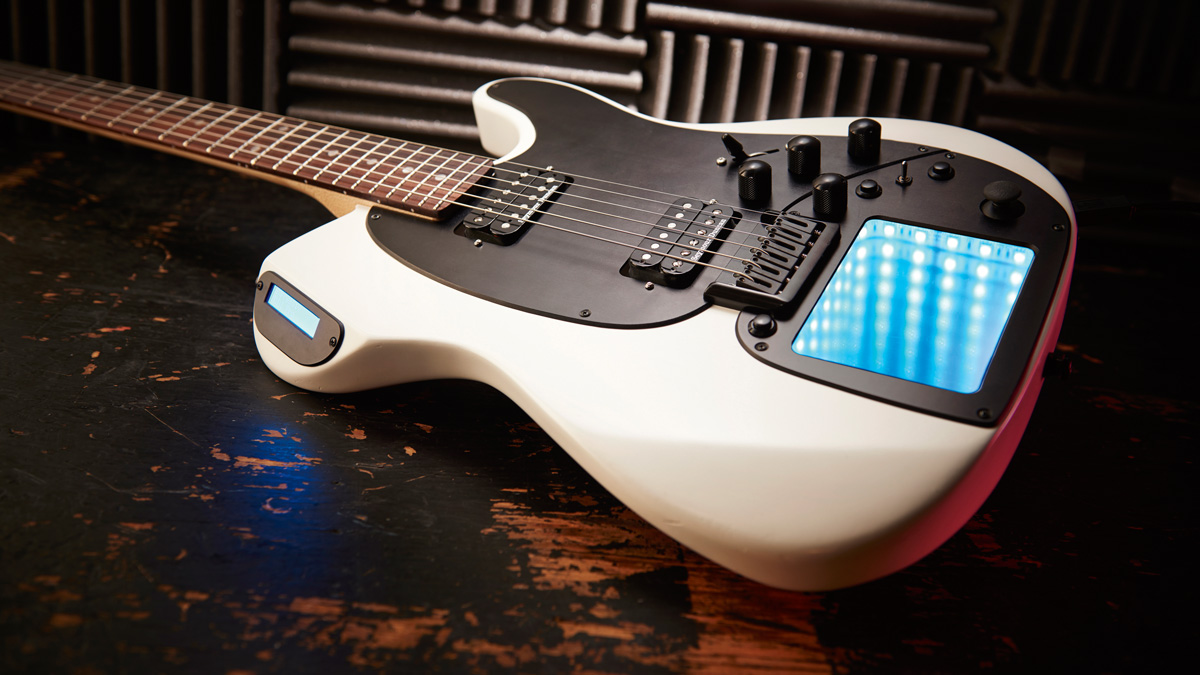MusicRadar Verdict
An exciting tool that has huge sonic potential.
Pros
- +
Creates all kinds of musical opportunities.
Cons
- -
Very few.
MusicRadar's got your back
MIDI, the protocol at the heart of much hi-tech music gear, is 33 years old this year, but transmitting MIDI from guitars to play sounds from a synth or sampler is still something taken up by a minority.
Nevertheless, being able to play any sound that you can think of from a guitar is a powerful asset both in recording and performance - and the Expressiv MIDI Pro from County Kerry-based Rob O'Reilly is designed to optimise that facility.
Rob set out to make the world’s most advanced MIDI guitar, with features including a 16MHz processor for extremely fast note-triggering, an in-built XY pad (not unlike the Korg Kaoss Pad in Matt Bellamy’s Manson guitars), and a patented polyphonic fretboard scanner to transform string and fret contact into 132 velocity sensitive switches.
The Tele-influenced Expressiv MIDI Pro is a nicely constructed guitar that plays well. Conventional electric guitar sounds come from a pair of Seymour Duncan humbuckers linked to a five-position switch and volume and tone knobs, while piezo bridge saddles offer faux acoustic sounds via a separate volume knob.
Its MIDI facility is powered via a USB cable - you can plug in and play with any computer-based DAW - but the MIDI output can also be sent via a standard five-pin MIDI Din plug. The overall MIDI output has its own volume knob, so you can easily control blends if you’re mixing MIDI sounds with the conventional.
Sounds
It’s the MIDI performance facilities, though, that are the unique selling point of this instrument. First off, there’s a button to call up the two playing modes. In Standard mode, you play as normal with a pick, or you can trigger fretted notes by tapping on the X/Y pad.
Meanwhile, Tap mode, making great use of the fretboard scanner, lets you trigger notes by touching the string on a fret, just like pressing a key on a keyboard, all with no latency issues, although open strings are not supported in this mode.
Want all the hottest music and gear news, reviews, deals, features and more, direct to your inbox? Sign up here.
Playing like this with your left hand leaves your right hand free to manipulate the sound using the X/Y pad and/or an adjacent joystick, typically bending the pitch or applying modulation, although there is a host of other assignable parameters available.
Further MIDI control is provided by a toggle switch for MIDI Program and Channel change, plus Octave Up and Octave Down buttons that can be used for semitone shifts or tuning changes (DADGAD/open D are currently available).
While the Expressiv MIDI Pro will do a sterling job recording MIDI notes into your DAW, onstage use is probably its main calling via powerful control over performance, with a stunning visual aspect to it using the XY pad lit up like a deep well lined with LEDs.
The sky’s the limit as far as your choice of MIDI sounds goes, but you can deliver them with infinitely sustaining notes and wild parameter manipulations. Factor in the onboard guitar sounds and you have a very special instrument with enormous sonic potential.
Trevor Curwen has played guitar for several decades – he's also mimed it on the UK's Top of the Pops. Much of his working life, though, has been spent behind the mixing desk, during which time he has built up a solid collection of the guitars, amps and pedals needed to cover just about any studio session. He writes pedal reviews for Guitarist and has contributed to Total Guitar, MusicRadar and Future Music among others.

